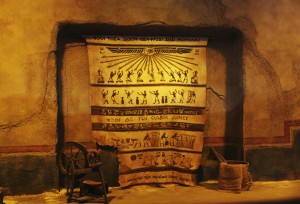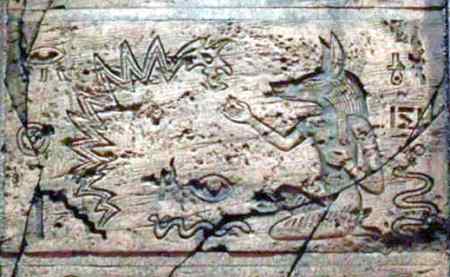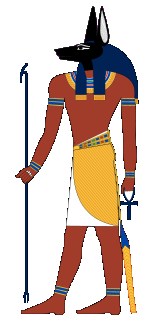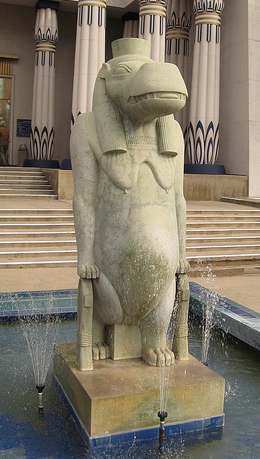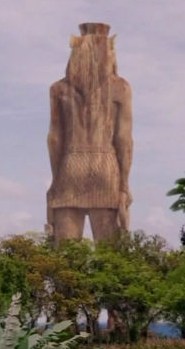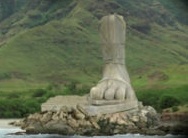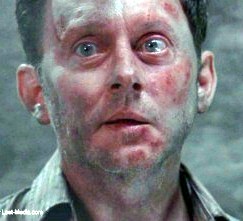
Smokie shows Ben faces from the past
Ben, still wracked with guilt over Alex’s death, has come back to the Island to be judged by Smokie, who he calls “The Monster.”
That name could just as easily be applied to Ben himself. Ben is a cold-blooded killer, as we see in both the present storytime and the past via flashback. In the present, Ben shoots Caesar point blank, after manipulating him into attacking John. In the past, Ben tries to kill Penny, who he has never even met, just to get back at her father. He shoots Desmond because he is in the way. Surely Ben is the real monster of this story.
And yet, it’s a testament to Michael Emerson’s skill as an actor that we don’t simply hate Ben. When he tells Charles that baby Alex is not an “it,” Ben seems human, even endearing. When he sees the vision of Alex in Smokie’s lair, and he says her name, the love, and longing, and sorrow, and regret in his voice is heartbreaking.
The episode is almost as much about Locke as it is about Ben. Being dead for a while seems to have done Locke a world of good. It must have been like a little vacation, if we can judge by how refreshed he looks! He’s got his Season One macho swagger back, his confidence, his smile, his twinkling eyes, and his ability to do a magic mind-meld with the will of the Island.
There’s a lot of talk about the Island’s will. Not only John, but also Ben, Widmore, and Alpert all have lines referring to “what the Island wants.” At times, they seem to equate “what Jacob wants” with “what the Island wants.” Does that mean that Jacob is the Island, in some sense?
We see Ben in several stages of his life, and along the way, a few mysteries are cleared up. Charles, with a lot of hair, visits Little Ben and tells him the Island saved his life. Young-man Ben, with a teenaged Ethan, takes baby Alex. Several years later, Alex is in a swing, and Charles is banished from the Island.
In the present, Ben appears freaked out that John is alive, and says that knowing it would happen is different from actually seeing it. Ben and Locke then take the Island version of a buddy road trip. They run into Sun and Lapidus. The latter has had it with dead men walking, and wants to leave Crazy Island. But Sun wants to stay and find Jin. Locke tells her he has some ideas for how she can do that.
Ben lies to Sun, and tells her that “dead is dead” and that he had no idea that Locke would come back to life. Or is it Locke he had lied to, earlier, when Ben told him he knew he would come back — and Sun to whom he is now telling the truth?
In any case, it’s off to the temple, an encounter with Smokie, and the appearance of undead Alex. Strangely, when undead Alex suddenly grabs Ben by the throat, out of all the many topics she could have chosen to discuss with her father during this rare opportunity for communication, she chooses to speak about John Locke.
She says she knew Ben was planning to kill him again, and that if Ben so much as touched John, she would hunt him down and destroy him. She orders Ben to listen to every word that John Locke says and to follow his every order.
That’s quite a good deal for Locke!
Earlier, when Ben was on the porch of his old home with Sun, he heard a rustling in the jungle. He said to Sun, “You may want to go inside. What’s about to come out of that jungle is something I can’t control.” He meant Smokie, of course, but then when it was Locke who walked out of the jungle, Ben’s statement still applied – John Locke is someone Ben can no longer control.
Mysteries solved:
Ben killed John to bring everyone together so they would come back to the Island (or, at least, that’s what Ben said).
Ben took baby Alex to save her.
Ben’s injuries when he boarded Flight 315 were from Desmond beating him up after Ben tried to kill both Desmond and Penny.
Unsolved mysteries:
What’s in the crate on the beach?
How did Ethan come to be with the Others?
Who is Ilana, really? And why did she ask Lapidus “What lies in the shadow of the statue?” and why did she knock him out when he couldn’t answer?
And who was Caesar? Was he just the innocent victim of Ben’s manipulations that he appeared to be? Or did he have a secret role on the Island as well?
Ben and the Smoke Monster (lightened) from screencap by Lost-Media.com (c) ABC


